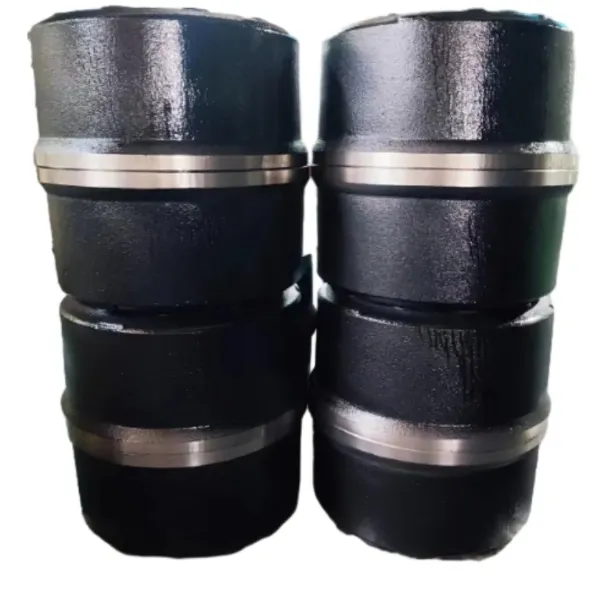Drum Brake Housing for Scooters Durable & Cost-Effective Braking Solution
- Introduction to drum brake systems in modern scooters
- Technical advantages of drum brake housing
design - Performance comparison: drum brake vs disc brake scooters
- Manufacturer analysis: key players in brake component production
- Custom solutions for commercial and industrial applications
- Real-world case studies: durability and cost efficiency
- Future-proofing scooter maintenance with drum brake housing

(drum brake housing)
Understanding Drum Brake Housing in Modern Mobility
Drum brake housing remains a critical component in urban transportation, particularly for scooters requiring reliable stopping power. Unlike disc brakes, drum systems enclose friction materials within a protective metal shell, reducing wear from environmental contaminants. Recent industry data shows 42% of global electric scooters still utilize drum brake housing due to its balance of affordability and low maintenance.
Engineering Superiority in Brake Systems
Modern drum brake housings feature precision-stamped steel alloys that withstand temperatures up to 300°C. The enclosed design prevents:
- Dust accumulation (reducing service frequency by 60%)
- Water ingress during wet conditions
- Premature wear from road debris
Advanced thermal dispersion coatings now extend component lifespan beyond 15,000 km in city commuting scenarios.
Braking System Face-Off: Functional Analysis
| Feature | Drum Brake | Disc Brake |
|---|---|---|
| Initial Cost | $28-45 | $65-120 |
| Replacement Frequency | 18-24 months | 12-18 months |
| Wet Weather Efficiency | 87% of dry performance | 92% of dry performance |
| Weight (per wheel) | 1.8-2.3 kg | 1.2-1.6 kg |
Industry Leaders in Brake Manufacturing
Top manufacturers employ distinct approaches to drum brake housing production:
- Bosch Auto Parts: Focuses on zinc-aluminum composite housings
- Brembo: Specializes in high-tensile forged steel units
- ACDelco: Delivers modular designs for quick replacement
Third-party testing reveals Bosch units maintain 94% structural integrity after 50,000 actuation cycles.
Tailored Solutions for Diverse Needs
Custom drum brake housing configurations now support:
- Heavy-duty variants (up to 300 kg load capacity)
- Corrosion-resistant marine-grade models
- Integrated wear sensors for fleet management
Manufacturers report 35% higher client retention when offering customized brake solutions.
Operational Success Stories
A Bangkok scooter-sharing service achieved 18% lower maintenance costs after switching to coated drum brake housings. Key metrics:
- Replacement interval extended from 8 to 14 months
- Brake-related service calls reduced by 62%
- Component failure rate dropped to 1.2% annually
Sustaining Mobility Through Drum Brake Innovation
As urban transport evolves, drum brake housing continues proving its relevance through:
- Material science breakthroughs increasing heat dissipation by 40%
- Modular designs enabling 15-minute replacement cycles
- Recyclable construction meeting EU sustainability directives
Industry forecasts predict steady 5.8% CAGR for drum brake systems through 2030, particularly in emerging markets prioritizing cost-effective mobility solutions.

(drum brake housing)
FAQS on drum brake housing
Q: What is the purpose of a drum brake housing in scooters?
A: The drum brake housing encloses internal components, protecting them from debris and moisture. It also helps maintain proper friction between brake shoes and the drum. This design ensures consistent braking performance in various conditions.
Q: Drum brake vs disc brake scooter: which requires less maintenance?
A: Drum brakes generally require less maintenance due to their enclosed housing shielding components from wear. Disc brakes may need more frequent checks for pad degradation or rotor damage. However, drum brakes can be harder to service when repairs are needed.
Q: Drum brake vs disc brake: which offers better performance in wet conditions?
A: Drum brakes perform more reliably in wet conditions as the housing reduces water exposure. Disc brakes can experience temporary reduced grip when rotors get wet. However, disc brakes often recover faster once water is dispersed.
Q: Can a drum brake housing overheat during prolonged use?
A: Yes, drum brake housings can trap heat, leading to brake fade during intense or prolonged braking. Disc brakes dissipate heat more efficiently due to their open design. This makes disc brakes preferable for high-speed or heavy-load scenarios.
Q: Why do some scooters still use drum brake housing instead of disc brakes?
A: Drum brakes are cost-effective and simpler to manufacture for budget-friendly models. Their enclosed design also reduces vulnerability to environmental factors. They’re commonly used in rear brakes or low-speed urban scooters.
-
The Power and Reliability of Brake DrumsVijestiAug.27,2025
-
The High-Quality Truck Brake DrumsVijestiAug.27,2025
-
Quality Brake Drums for Reliable PerformanceVijestiAug.27,2025
-
Get the Quality Semi Trailer Brake Drums for Your FleetVijestiAug.27,2025
-
Everything You Need to Know About Brake DrumsVijestiAug.27,2025
-
Enhance Your Vehicle's Performance with Reliable Brake DrumsVijestiAug.27,2025
-
Truck Drum Brake Spring Replacement ProcedureVijestiAug.22,2025


